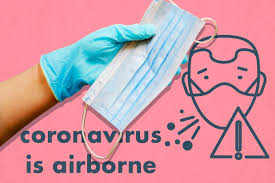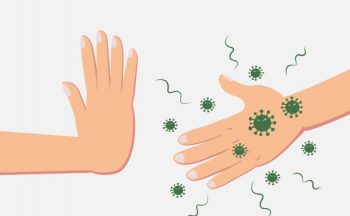 April 2021
April 2021
Enhanced high-rise cleaning protocols include more frequent cleaning, focus on touch points, more intensive surface cleaning and spraying with antimicrobial solutions to fight COVID.
Increasingly, scientists are saying there is little to no evidence contaminated surfaces can spread COVID. Experts now say scrubbing surfaces, while helpful, does little to fight the indoor threat of coronavirus. All this energy gives us a false sense of security. Our focus should be directed toward what can make a greater difference.
We presumed COVID was caused by germs that spread from contaminated surfaces because of our knowledge of influenza, colds and other viruses. While logical, this was incorrect. Viruses, including the common cold and influenza, are caused by germs that can spread from contaminated surfaces. When the coronavirus outbreak emerged, we incorrectly applied this knowledge.
The principal mode for spreading the virus is now recognized as respiratory droplets according to the Centers for Disease Control and Prevention. This occurs when the virus is exhaled into the air by those infected, where it remains before others are infected by breathing in this air. We’ve learned that the virus can remain suspended in the air for hours while infecting people as they inhale. Risks increase in stagnant air, crowded spaces, and areas with poor ventilation.
COVID could spread among residential suites and offices when building ventilation systems are not working properly. Improving ventilation and filtration of indoor air to prevent airborne transmission should be the focus.
 In high-rise communities building management maintain ventilation systems. Regular and preventative maintenance can ensure sufficient fresh air enters the building. Higher air pressure in corridors keeps air from leaving units except through exhaust systems. Residents can do their part by replacing air filters more frequently and with higher quality filters.
In high-rise communities building management maintain ventilation systems. Regular and preventative maintenance can ensure sufficient fresh air enters the building. Higher air pressure in corridors keeps air from leaving units except through exhaust systems. Residents can do their part by replacing air filters more frequently and with higher quality filters.
Find Vendors in these Related Categories
- Air Quality
- Building Sciences
- Cleaning & Janitorial Services
- Cleaning Services - Carpets
- Cleaning Services - Ducts
- Cleaning Services - Windows
- Contractors - Electrical
- Contractors - General
- Contractors - Mechanical
- Door & Lock Services
- Engineering Services
- HVAC
- Mould Detection & Remediation
- Odour Control
- Parking Management/Cleaning Services
- Paving, Concrete and Epoxy Coatings
- Pressure Washing
- Roofing
- Roofing - Green
- Waste Services
- Water Proofing & Systems







